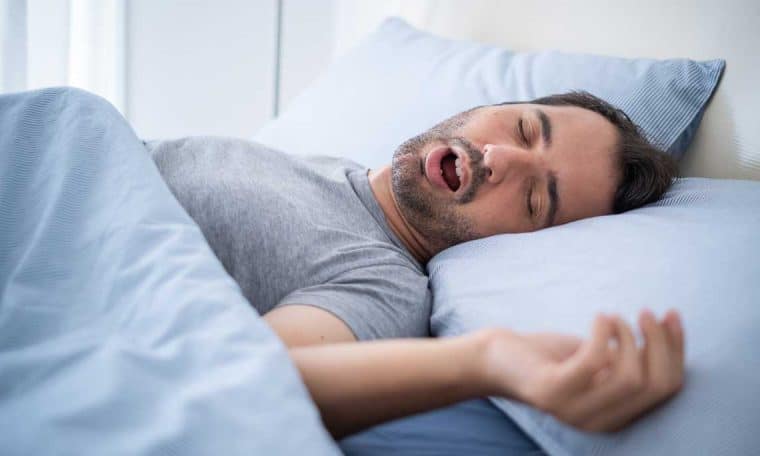
The constant feeling of tiredness and restlessness, the persistent daytime exertion, and the exasperation of being sleep-deprived invariably—these can be the signs of obstructive sleep apnea. Many individuals are grappling with OSA, enduring consequential health complications. Often the major signs and symptoms are taken lightly, resulting in undiagnosed sleep apnea. However, quality sleep and its benefits are countless. It is vital for short-term vitality and long-term physical, mental, and emotional well-being.
Sleep disorders like insomnia and sleep apnea may be baffling to understand for the ones suffering from it. Conversely, it can be better understood by seeking professional consultation and medical advice.
However, convenient and feasible diagnosis can be done within the comfort of home through a home sleep test. Also, veterans with low insomnia VA disability rating guidelines can opt for home sleep test that could help them cope with adverse impacts of sleep disorders through timely interventions. To explore more about a home sleep test and learn how to conduct it including the potential benefits—keep following the blog till the end!
Home Sleep Test—In Detail
Historically, a sleep apnea test was administered in a laboratory. Since digital advancements and tech-savvy approaches have evolved immensely, a sleep apnea test can now be conducted conveniently at home. A sleep test assesses whether an individual suffers from sleep apnea by monitoring the breathing patterns throughout the night.
A home sleep test allows diagnosis and provides result without requiring staying in the laboratory overnight. Simply, follow the instructions given and prepare a setup that usually involves attaching the device to the finger and switching the app on before falling asleep. After completing the test on a chosen night, the result can be submitted for analysis by a certified sleep physician.
This way the sleep physicians can engage in having a discussion on the test result and potential treatments that could resolve or manage sleep apnea repercussions to a favorable extent.
Transformative Advantages of Home Sleep Testing
A self-administered test offers numerous advantages. A home sleep test provides cost-effective, secure, convenient, and simple method for diagnosing sleep disorders within the comfort of home.
- Cost-Effectiveness: In comparison to a lab-test, a home sleep test eliminates the cost of using overnight facility along with expert technician’s support. This makes home sleep testing a lot more affordable and a cost-effective solution for those seeking convenient diagnosis at home.
- Comfort and Ease: With convenience and a sense of comfort, results may accurately reflect typical sleep patterns indicating potential sleep disorder. Home sleep testing eliminates the need to schedule appointment and the hassle that comes along. Home sleep testing provides great flexibility to choose optimal time for testing while sleeping comfortably at home.
- Rapid Results: With rapid results available the next morning, one can swiftly access information and interpretation through telehealth visits. These results can easily be transmitted through cloud, allowing expedited review and consultation. This quick review ensures access to necessary treatment options.
- Reduced Wait Times at Clinics: Unlike sleep clinics, there is no waitlist for those conducting home sleep test as they eliminate the need to visit a lab facility. A convenient and prompt diagnosis through home sleep testing allows quick treatment interventions and reduces symptom progressions.
- Home Sleep Testing Offers Accurate and Precise Results: Individuals might ponder over the accuracy of home sleep testing in comparison to traditional lab studies. While home sleep testing excels in diagnosing disrupted breathing patterns and sleep apnea, they may not be optimal for individuals with other health conditions.
Consulting a sleep physician or insomnia doctor online via telehealth options can allow an individual to ascertain the suitability of a home sleep test based on the needs and requirements of the patient.
How to Decide if Home Sleep Testing is the Right Option?
A sleep physician can determine the suitability for home sleep testing provided that the individual fits a specific profile. A home sleep test is recommended for healthy adults showing symptoms of moderate to severe obstructive sleep apnea. If an individual fits this profile, preferring a home sleep test then the sleep physician can recommend home sleep study.
Conversely, if an individual exhibits other sleep disorders or underlying health complications a lab-test could be a more feasible and accurate option in this situation. A laboratory test allows heightened accuracy and comprehensiveness in such situations.
In either case, consulting a certified sleep physician is recommended so that informed decision could be made tailored to specific symptoms and medical history shared.
What to Expect from a Home Sleep Test?
An at-home sleep test measures bodily metrics such as airflow, breathing patterns, snoring tendency, and blood oxygen levels. These metrices then help to determine the diagnosis for sleep apnea and disruptive breathing patterns. However, the specific features of home sleep devices may vary but the common parameters that most of them work upon are as follows;
- Respiratory Complications: This metric evaluates the breathing pattern by monitoring the expansion and contraction of chest. Some home sleep testing kits are accompanied with a chest belt to monitor chest movements during the sleep.
- Snoring: Some home sleep devices are equipped with mechanism that could monitor snoring patterns and nasal congestion.
- Oxygen Saturation: Pulse oximeter typically measures the blood oxygen levels during the sleep. It is worn on the finger during sleep test and helps to detect oxygen saturation.
- Peripheral Arterial Tone: Through finger artery volume, this metric indicates abnormal breathing patterns during sleep without airflow or respiratory assessments. This feature eliminates the need to rely on chest bands or nasal cannulas.
Things to Consider Before Taking a Home Sleep Test
To ensure a successful home sleep test, one may adhere to the following guidelines that could offer optimal and accurate results of the diagnosis;
- Eliminate taking a nap on that very day to ensure better and prolonged night’s sleep that provides a better ground for sleep test.
- Avoid using hair gels or lotions before sleep so that sensors and leads could be attached easily to the body for accurate readings.
- Avoid alcoholic drinks or caffeine before bed as it can boost the symptoms of sleep apnea.
- Certain medications could be avoided while one may take their regular medicines
Lastly, inquiring a sleep physician or a doctor regarding any specific query could provide clarity on how to conduct a sleep test.
Final Verdict
Sleep disorders are often overlooked due to their occurrence during the night. However, the reverberations of neglecting such conditions could be detrimental and severe. Sleep apnea imposes significant risk factors if left untreated in the long run. This condition can lead to persistent fatigue, daytime fogginess, poor cognitive functions, memory loss, and mood swings. Furthermore, it may also impose severe complications on physical health such as heart and lung functions.
However, accurate diagnosis and timely treatment interventions can save from such detrimental and lasting effects. Therefore, a home sleep test is recommended to individuals preferring sleep study at home rather than a lab facility.
At last, consulting a physician can clear the air, paving an accurate pathway that could treat sleep disorders.
Also Read: Unlocking the Future of Vision Care



